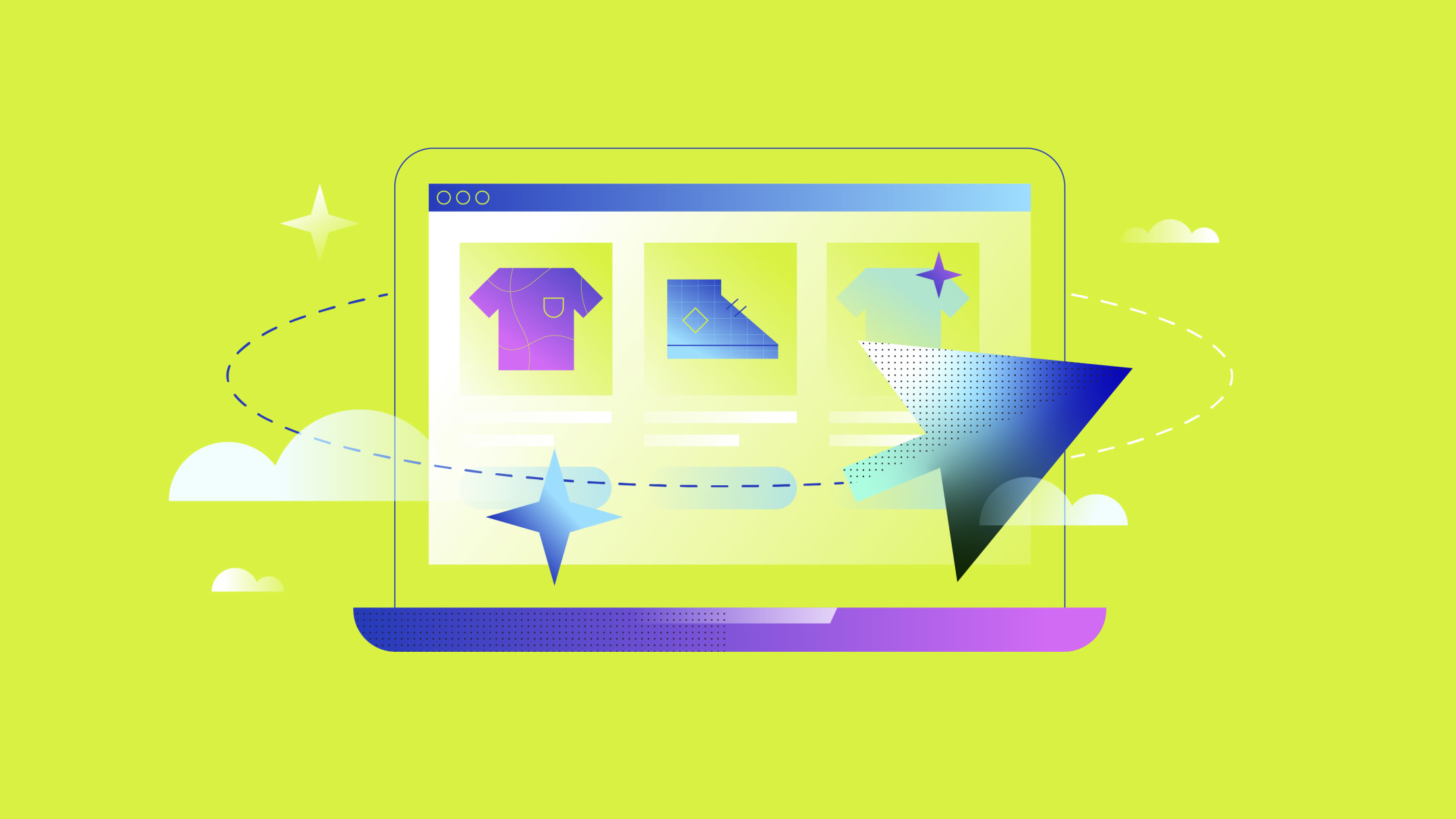Everyone loves a returning customer. A returning visitor, on the other hand—a user that visits your ecommerce store, wanders around product pages, and perhaps signs up to your mailing list, often without making a purchase—can be a bit more frustrating.
But this customer segment, when targeted correctly, can be the low-hanging fruit of acquisition: Returning visitors already know your brand, its products, and, oftentimes, the pain point they’re solving by buying it. With a few subtle nudges, these anonymous browsers can become lifelong customers.
This guide shares how to identify returning visitors, drive them back to your ecommerce store, and convince them to buy—whether they’re existing or soon-to-be first-time customers.
- What is the returning visitor metric?
- The difference between unique visitors and returning visitors
- Returning visitor best practices
- Returning visitors FAQ
What is the returning visitor metric?
The returning visitor metric tells you how many people visit your website multiple times. Someanalytics reportsdisplay returning visitors as a percentage of overall traffic. Unlike single session visitors, the returning user keeps coming back to your ecommerce store.
Why is the returning visitors metric useful?
The returning visitor metric gives valuable insights into marketing strategies, website design, and user experience.
Compare the number of returning visitors to your site against its conversion rate. A high number of returning visitors but a low conversion rate could indicate that your ecommerce site isn’t doing its job of convincing customers to buy. Perhaps users didn’t see enough social proof, encountered a problem, or were simply viewing your website while still at the top of themarketing funnel.
“If users don’t find your product or service useful, or perhaps find your business website difficult to navigate, they’ll likely abandon the website or app and opt for a competitor,” says Brian Lim, CEO ofiHeartRaves. “Improving user retention helps you to maintain and grow your customer base—which means more opportunities for monetization in the long term.”
Alternatively, if you have a low number of returning users and a high conversion rate, it’s a strong indication that your website content appeals to the targeted website traffic you’re driving—so much so, they purchase during their first session.
A good returning visitor rate for ecommerce websites is around30%—anything above could indicate website visitors aren’t confident in making a purchase during their first session. Perhaps they didn’t see enough social proof, the website wasn’t trustworthy enough, or they couldn’t figure out which product would best solve their problem. Either way, they didn’t become a customer there and then, but there’s still enough interest to revisit your ecommerce site.
A returning visitor rate below 30%, on the other hand, could indicate that first-time visitors don’t find what they’re looking for and never return. These users weren’t captivated enough to purchase during their initial session and have yet to return. Work on increasing return visitor rates by driving one-time visitors back to your storefront.
Difference between unique visitors and returning visitors
A returning visitor is a person that’s already visited your online store. A unique visitor, on the other hand, is a person who visited your website at least once throughout the reporting period.
Let’s say you have 500 people browsing your website over a given week. Half of them revisit your website the following week. In this case, you’d have 500 unique visitors but 250 returning users.
How to find returning visitor data in Google Analytics
See how many new and returning visitors access your ecommerce store over a given period using the Retention report inGoogle Analytics 4.
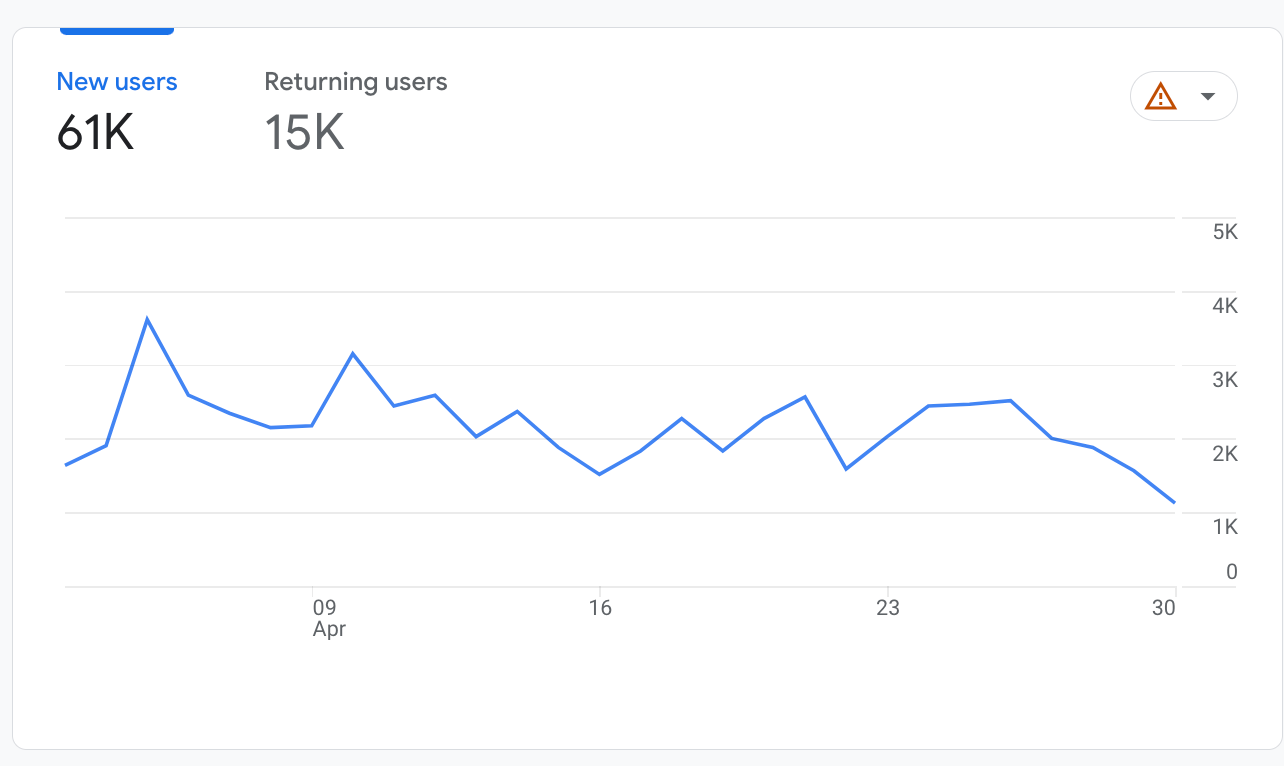
Google Analytics’ new vs. returning users report.
Make the returning visitor metric more useful to your ecommerce business by excluding existing customers. Inside Google Analytics,create a new segmentwhere revenue per user equals more than $1 to separate returning visitors who haven’t bought from returning customers who have.
These people are the low-hanging fruit: the segment who show clear interest in your products but haven’t yet made the leap. The remainder of this article will focus on engaging this crucial customer segment.
What returning visitors and Google Analytics can’t tell you
Google Analytics is a good starting point for merchants exploring website analytics. Unfortunately, it isn’t entirely accurate when benchmarking returning visitor rates.
If a single user visits your website on their desktop and later again on mobile, Google Analytics won’t connect the two sessions. The platform can’t collect data from website visitors who regularly block cookies or use private browsing mode either. Unless these returning visitors head back to your site using the same device and the same browser with cookies enabled, they’ll always be classified as new users.
Enlist the help of a Shopify PlusCertified App Partnerto gather more accurate data about website visitors. Pool data from various sources—including your Google Analytics, your ecommerce website, social media profiles, and advertising accounts—in one dashboard to get greater visibility into how new versus returning users engage with your brand.
Popular options include:
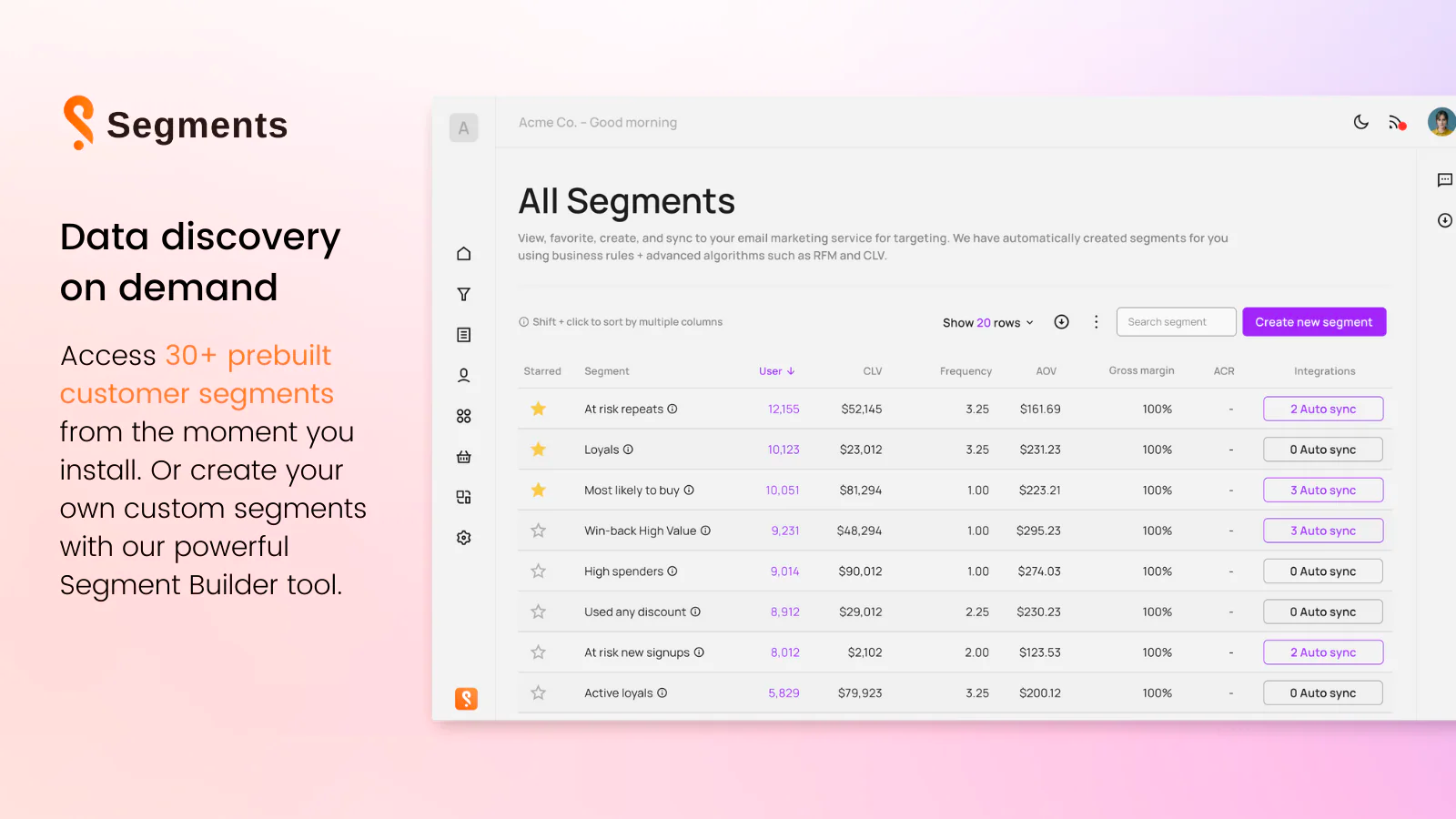
Segments combines data from several sources to provide more accurate data reports.
Returning visitor best practices
How to increase return visitor rates
The first step in monetizing return visitors is to drive them back to your online store.
- Run a quiz to collect first-party data
- Build a brand community
- Run retargeted ads
- Send cart abandonment emails
Run a quiz to collect first-party data
The death of third-party cookies is wreaking havoc on many ecommerce marketing campaigns.
In October 2021,Apple’s iOS 14 updategave consumers greater control over the data companies can collect through their devices. It caused advertisers tolose 30% accuracyon targeting algorithms, costing an estimated$10 billionin advertising revenue.
Inaccurate user tracking can skew returning user metrics and conceal important user tracking data about the people visiting your website. But the most powerful tool in convincing a returning visitor to come back is personalized content: some63% of consumersnow expect a personalized shopping experience as standard.
Collect that throughfirst-party data—information submitted by a customer without any third-party involvement.
Jones Road Beauty, for example, usesOctane AIto host its “Find your shade” quiz. People who take the quiz during their first website session give the brand valuablecustomer datait can use to drive them back post-session, such as their:
- Age
- Skin tone
- Skin texture
- Product use case

Jones Road Beauty’s “find your shade” quiz.
Quiz-takers must enter their email address in order to receive thepersonalized product recommendations. That opens the door for Jones Road Beauty to deliver custom email marketing campaigns—including products best suited to each individual subscriber—that increase return visitor rates and conversions.
Build a brand community
Social commerce is booming. By 2025, it’s estimated that5.2% of all US retail saleswill happen through social media and account for$80 billionin retail sales.
Thissocial commerce trendis a superb way to increase returning visitor rates. Start with pop-ups and incentives that encourage first-time website visitors to connect with your brand on social media.
David Zhang, CEO ofKate Backdrop, says, “We also make sure to engage with our customers on social media so they can stay up-to-date with new product releases or discounts. Our Facebook VIP group is also a great way to keep customers engaged and part of our family. We offer exclusive discounts, sneak peeks, and other rewards that drive people to our website.”
Once people are on your email list but haven’t yet bought, entice them to opt into another platform in yourmultichannel marketingmix. For example, sunglasses retailerTensemails its subscribers with an invite to follow the brand on Instagram:

Tens’ nudge to engage returning visitors on Instagram. Source:Really Good Emails
Once you’ve got a first-time visitor inside your social media sphere of influence, use a variety of formats to drive them back to your online store. Simple ways to drive traffic from social media include:
- Syncing your Shopify Plus store withFacebook,Instagram, orTikTok
- Hosting livestreamsand tagging products from your store
- Reposting influencer- or user-generated content created throughShopify Collabs
Brian Lim says iHeartRaves uses a social media community to drive previous visitors back to its online store: “[Social media] allows us to create meaningful relationships with them, get their attention, and drive ongoing conversations.
“In fact, for Taylor Swift's The Eras Tour, we're giving customers some outfit ideas that fit the theme of the concert. This has been an effective way to keep people engaged, while also driving sales back to our store. It's also our way of motivating other fans to join in, creating a community.”
Run retargeted ads
Platforms like Google Shopping, Facebook, and Instagram offer tools that help merchants build remarketing campaigns at the single-product level. This approach zeros in on exactly what a previous visitor has shown interest in, including items they’ve previously viewed, bought, or added to their online shopping cart.
Create slight variations for retargeted product pages—with only the headline or price adjusted—to add continuity to each campaign so that the ad matches the page. Returning visitors are served up a unique experience with a clear connection at every step.
Pet brandPawz, for example, uses this Facebook ad to retarget people who left its website without purchasing.
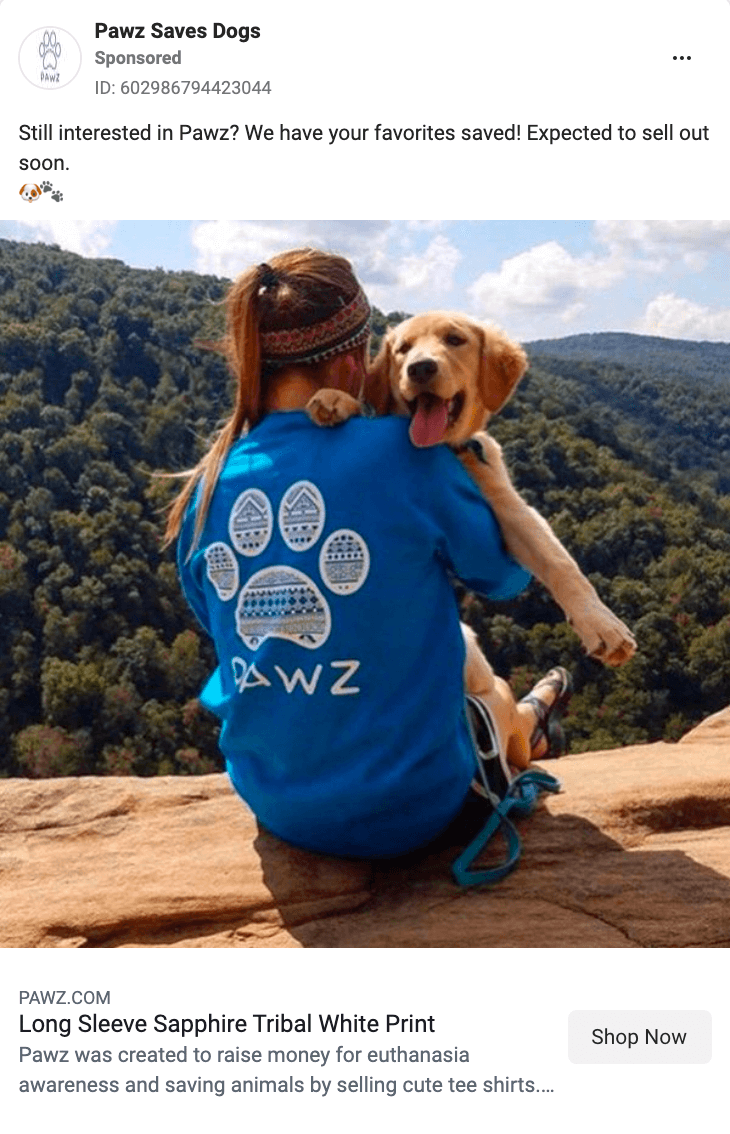
Pawz leads its retargeting campaigns with microcopy that says, “Still interested in Pawz?” Source:Klientboost
Send cart abandonment emails
The ultimate goal is to turn every unique visitor into an email subscriber. Email marketing is considered the holy grail marketing channel for several reasons—the largest being your ability to capture customer data and communicate with subscribers in one of the most sacred online channels: their inbox.
Take website activity into consideration and prioritize website visitors that have indicated they’re likely to buy. Almost70%of all online shopping carts are abandoned. Automatedcart abandonmentemails to connect subscribers with the product pages they viewed during their most recent website session.
Email marketing services likeKlaviyoandYotpointegrate with Shopify Plus to combine website activity with subscribers. Repromote the same items to remind people of the items they left mid-checkout and convince them to return to your website, like this cart abandonment email fromLiquor Loot:
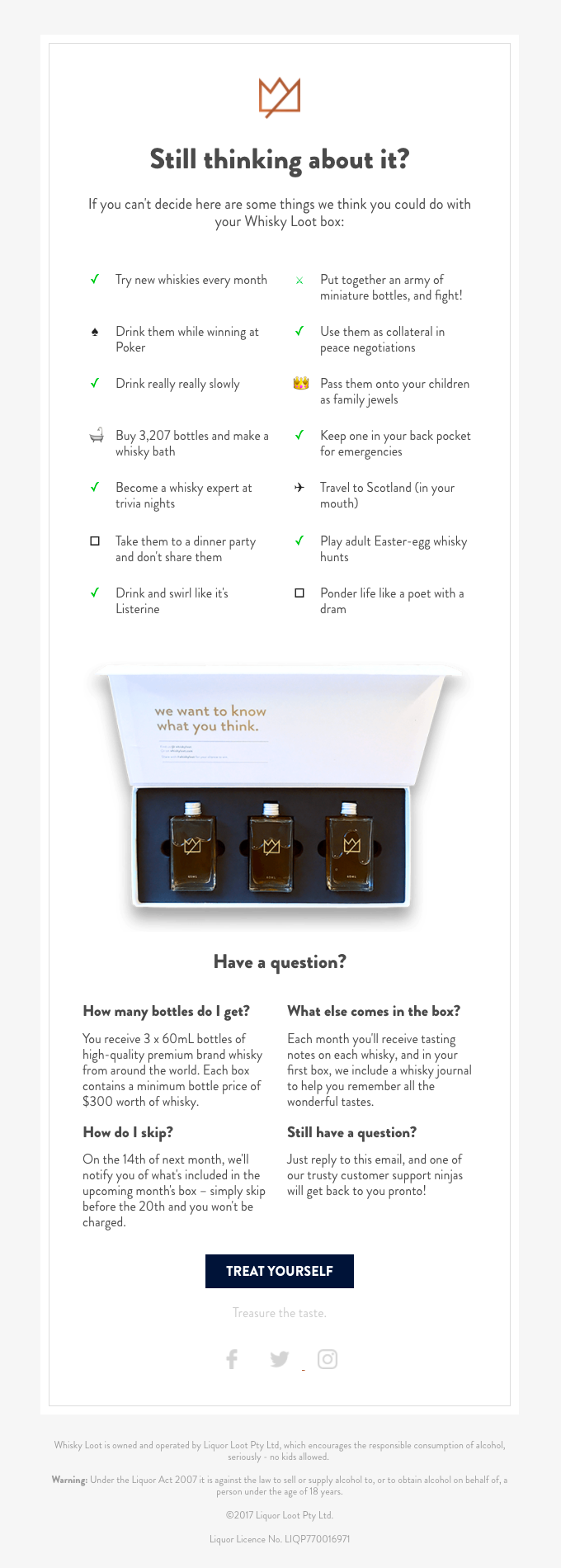
Liquor Loot’s cart abandonment email. Source:Really Good Emails
Successful cart abandonment emails don’t just remind people of the items they left in their cart. They also ease any pre-purchase objections related to price, delivery, or product use cases. Liquor Loot’s cart abandonment email nails all three.
How to turn return visitors into buying customers
- Use scarcity
- Display dynamic content
- Expand on product descriptions
- Level up product photography
- Display social proof and trust signals
- Offer an incentive
- Enable one-click checkout
Once you’ve got returning visitors back on your website, here’s how to convert them into paying customers.
Use scarcity
In some cases, the returning visitor heads back to your ecommerce store with the intention to buy. Fear—namely, the fear of missing out on something better—holds some back. Peoplecrave security, to be assured that they’re getting “the best,” whether that’s quality or price.
Nudge these people to make a purchase through urgency and scarcity. Give a time constraint on the exact product they’ve been looking at, such as:
- Limited edition products
- Product drops with limited stock
- Time-sensitive coupons or discounts
Momofuku, for example, uses “get it while you can”-style messaging on its Facebook retargeting campaigns:
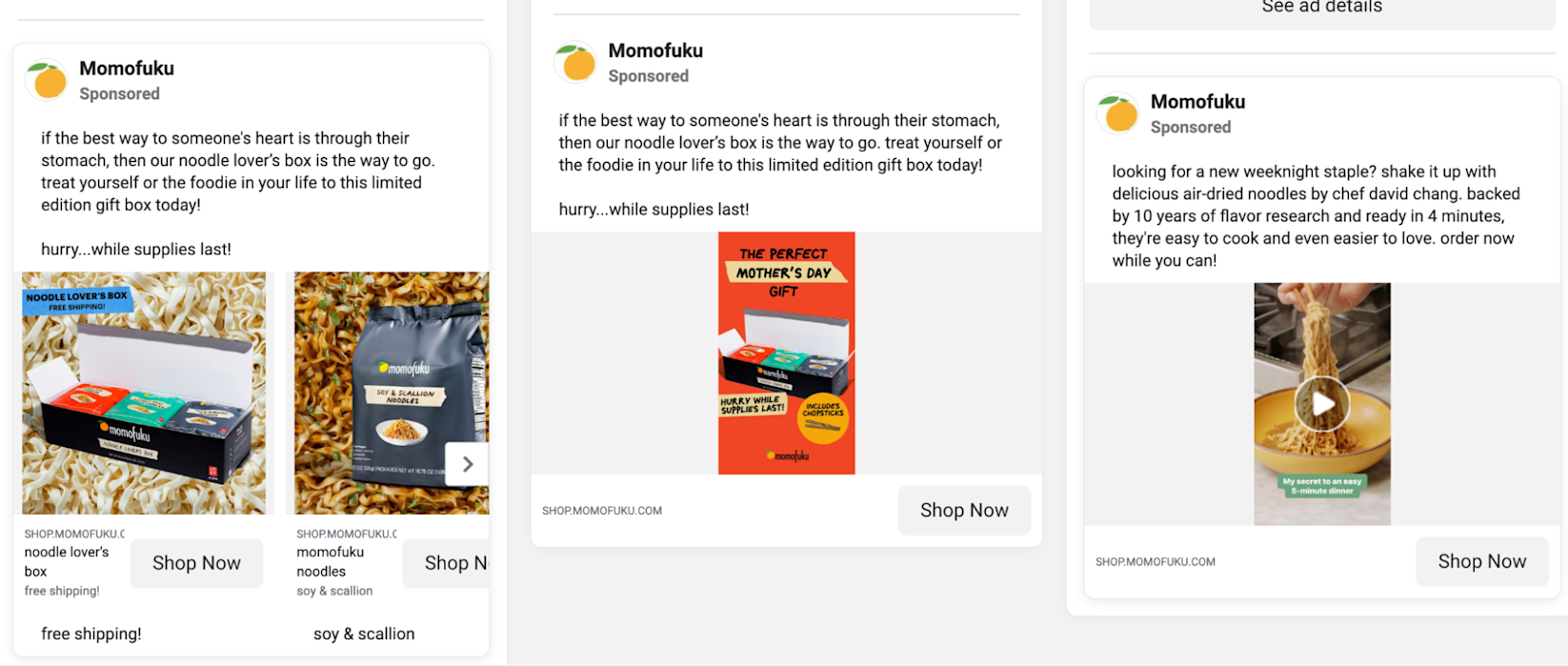
Open Spaces, on the other hand, promotes product drops to its email list. Returning visitors have an incentive to buyright now—the fact that only 500 units are available in each color way—instead of waiting and likely forgetting.
Plus, if your segment of returning visitors haven’t yet built enough trust in a retailer to buy, Open Spaces details the design process for its products. Returning visitors see three unique selling points directly beneath the main call-to-action, which acts as the final nudge to buy.

Open Spaces promotes its limited-edition organizing trays. Source:Really Good Emails
Display dynamic content
所有流量来源提供返回游客directly to your product pages, so optimizing them with this segment in mind is crucial.
Dynamic pricinglets you easily adjust prices to fit both supply and demand. When you call attention to changes in price—visually on-page or through email and retargeted offers—the returning visitor is given a fresh nudge to convert.
The same concept applies to any content on your ecommerce website, from product descriptions to call-to-action buttons. Use dynamic content to switch up page content and provide returning visitors with a novelty experience—one that doesn’t interfere with the shopping experience of first-time visitors.
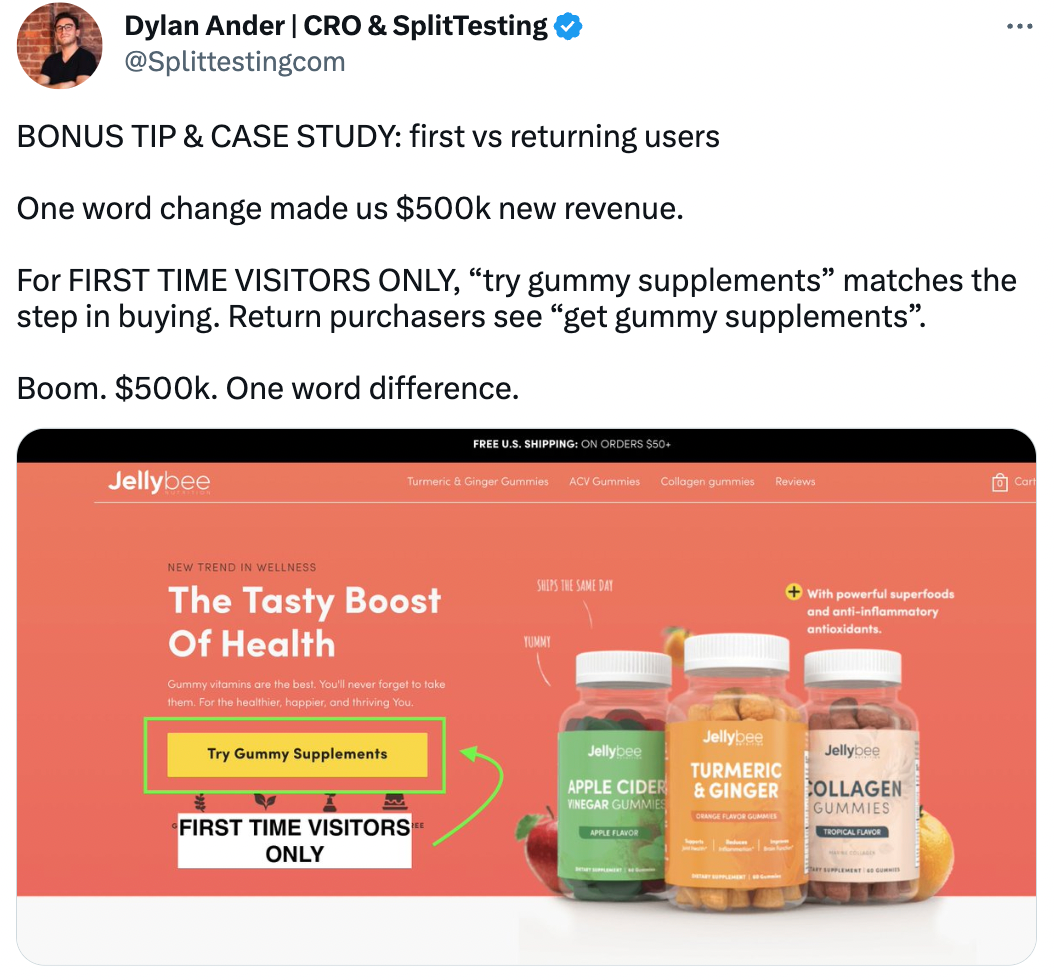
Expand on product descriptions
Since returning visitors are already contemplating a purchase, the best thing you can do is help them make a good decision. Unlike first-time visitors,return visitors dig deep into copy, so giving them a full experience is enticing.
Returning visitors likely have several sites open at once, comparing prices and product specs. Don’t make this comparison process difficult. Instead, become the standard against which your visitor measures everything else.
Outdo your competition when it comes to comprehensiveness and transparency. A merchant can gain a serious edge against a competitor with an identical product simply by providing everything the visitor needs to know.
Because product specifications aren’t as sexy as descriptions, many ecommerce sites neglect them. Making them obvious, either by listing them immediately next to the product image or creating a clearly marked tab, makes it easy for returning visitors to confirm your product is the one they need.
Boll & Branchnails both specs—through its Details dropdown—as well as product descriptions that clearly communicate how its pajamas differ from the competition.
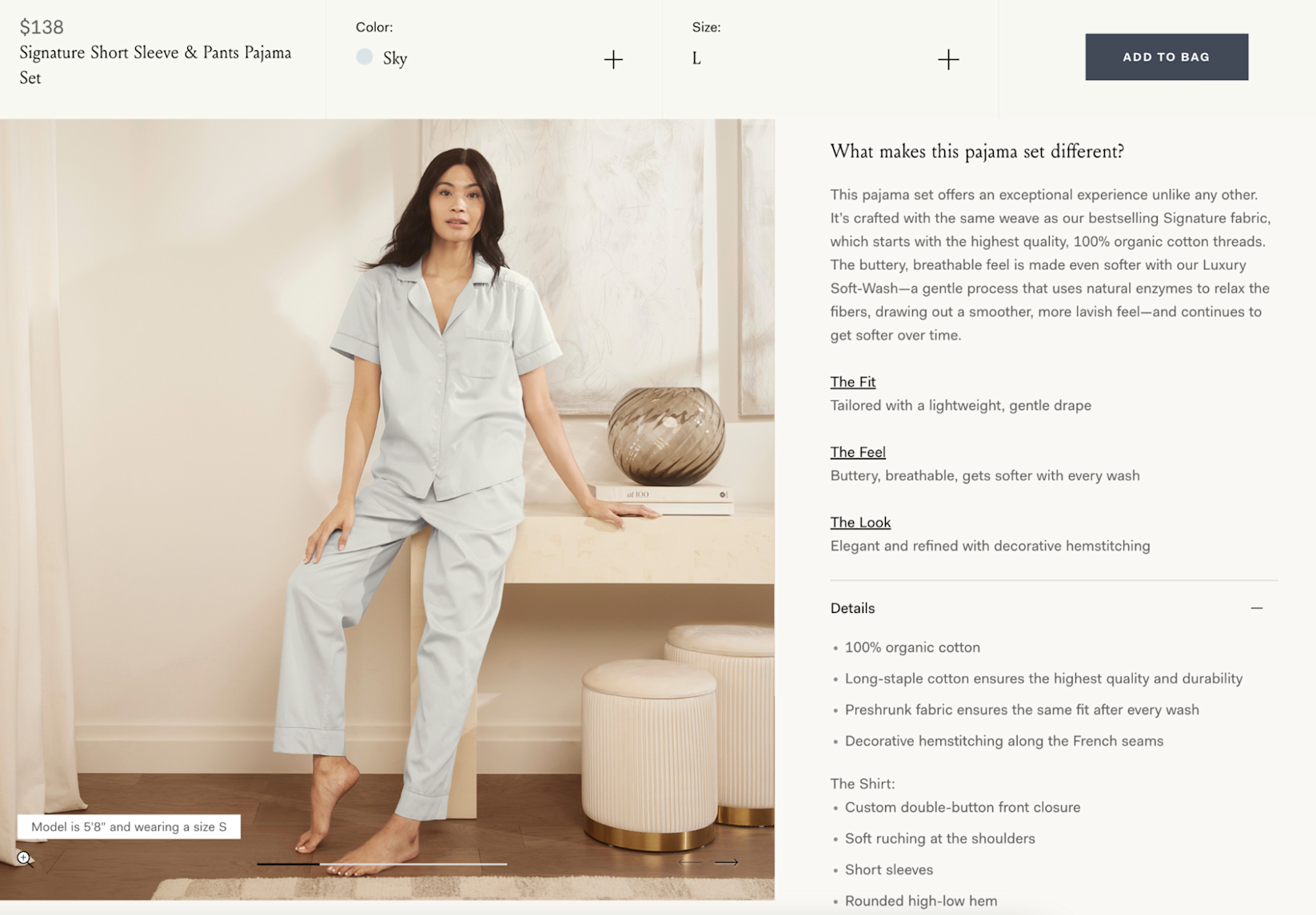
Boll & Branch product pages describe its pajamas in depth.
Level up product photography
Ecommerce visitors don’t have the luxury of interacting with your product in the flesh. They rely on visual cues, such as product images and videos, to make purchasing decisions. Make visuals personable, relatable, and vivid depictions of how much better off the visitor will be after buying.
“We make it easy for customers to visualize the products they are interested in,” Brian Lim says. “This means all our items have their respective photos—front and back, zoomed-in pictures, and corresponding descriptions. We also highlight any product features that might be relevant for the customer. For example, some rave bras have detachable straps for extra versatility. This helps our customers make an informed decision about their purchase.”
Simbademonstrates how to do this well. It sells mattresses—a high value item that customers use daily. The purchase decision is a complex one, likely contributing to a high returning visitor rate. Simba uses product photography to show several elements of its product, from its spring technology to overall appearance, to help reconfirm to returning visitors that its mattress is worth investing in.

Simba’s product pages show videos of how its mattress springs work.
Steve Reid, co-founder and co-CEO ofSimba, adds, “Many companies spread themselves too thin with too many different stores and worrying about too many different metrics. We win by listening to our customers, by only going into those markets that we believe we can execute in.”
Display social proof and trust signals
评论、评分和灌输的反对fidence wary returning visitors need to make a purchase during their next session. Make what other people say dominant and include both quantitative and qualitative social proof.
Barebonesgoes the extra mile on social proof. It includes user-generated content on its product pages with a carousel of content shared by existing customers. Returning visitors can envision themselves in Barebones shoes—a common obstacle shoppers need to overcome prior to making the next step.
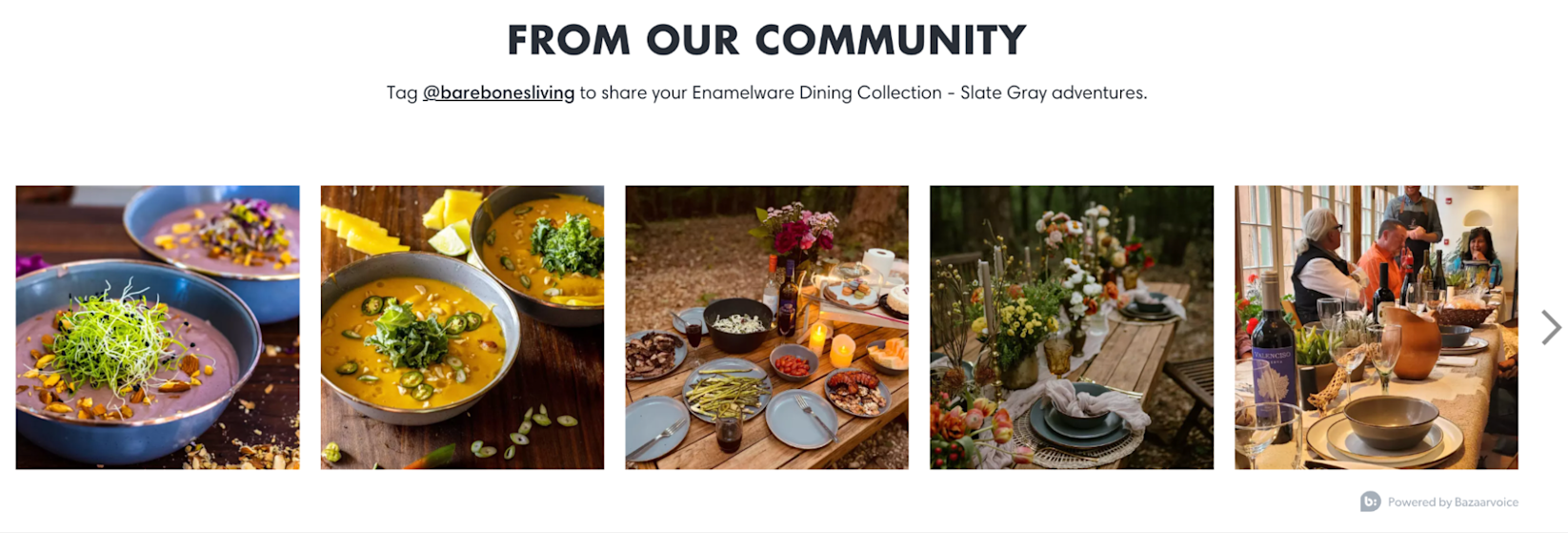
Barebones reposts user-generated content on its product pages.
Similarly, use trust signals throughout each touchpoint you have with a returning visitor. From the initial email to the checkout page, prove to a returning visitor that your brand can be trusted with a consumers’ hard-earned money through:
- Payment processor logos
- Free returns policies
- Money-back guarantees
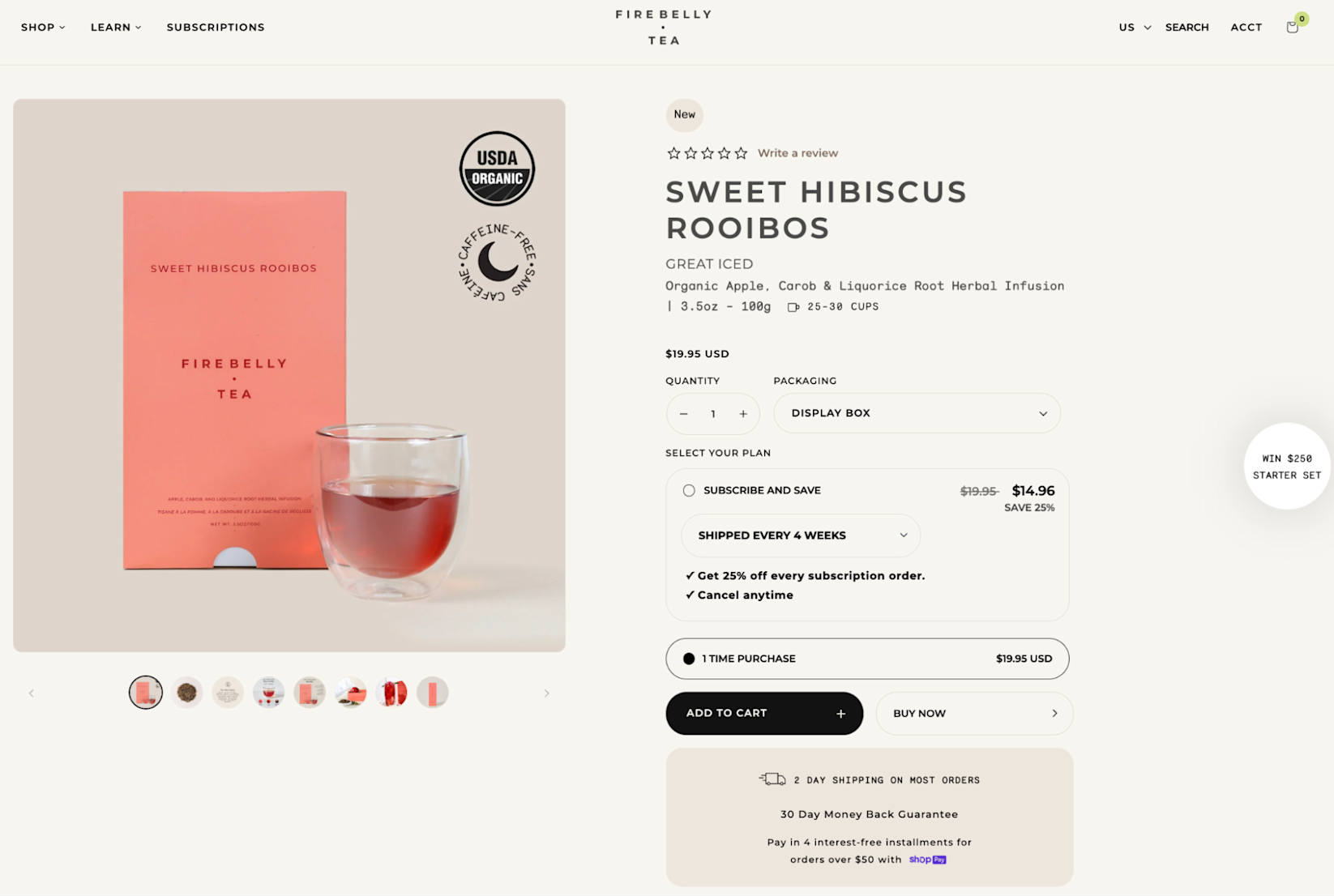
Firebelly Teashows its two-day shipping policy, 30-day money-back guarantee, andShop Pay Installmentoptions on product pages.
Offer an incentive
An incentive gives the returning visitor one final push to convert during their next session. But coupons can slash profits. Combine that discount with an already-expensive customer acquisition cost through retargeting and some merchants won’t turn a profit until their returning visitor purchases multiple times.
Instead of defaulting to percentage discounts to win over a returning customer, experiment with usingShopify Scriptsto promote other incentives such as:
- Free, fast, orcarbon-neutral shipping
- Free upgrades
- Exclusive bundles
- Buy now, pay later options
- Buy one, give one donations
EasyStandardput this into practice on its Shopify Plus store. Like many scaling brands, the apparel retailer struggled with logistics. Customers were also building unofficial bundles of their favorite products without any reward.
In a bid to solve these logistical challenges and incentivize future customers to increase their average order value, EasyStandard enlisted the help ofShopify Fulfillment Network. It got default access toShop Promise—the ability to show accurate delivery dates across both product and checkout pages.
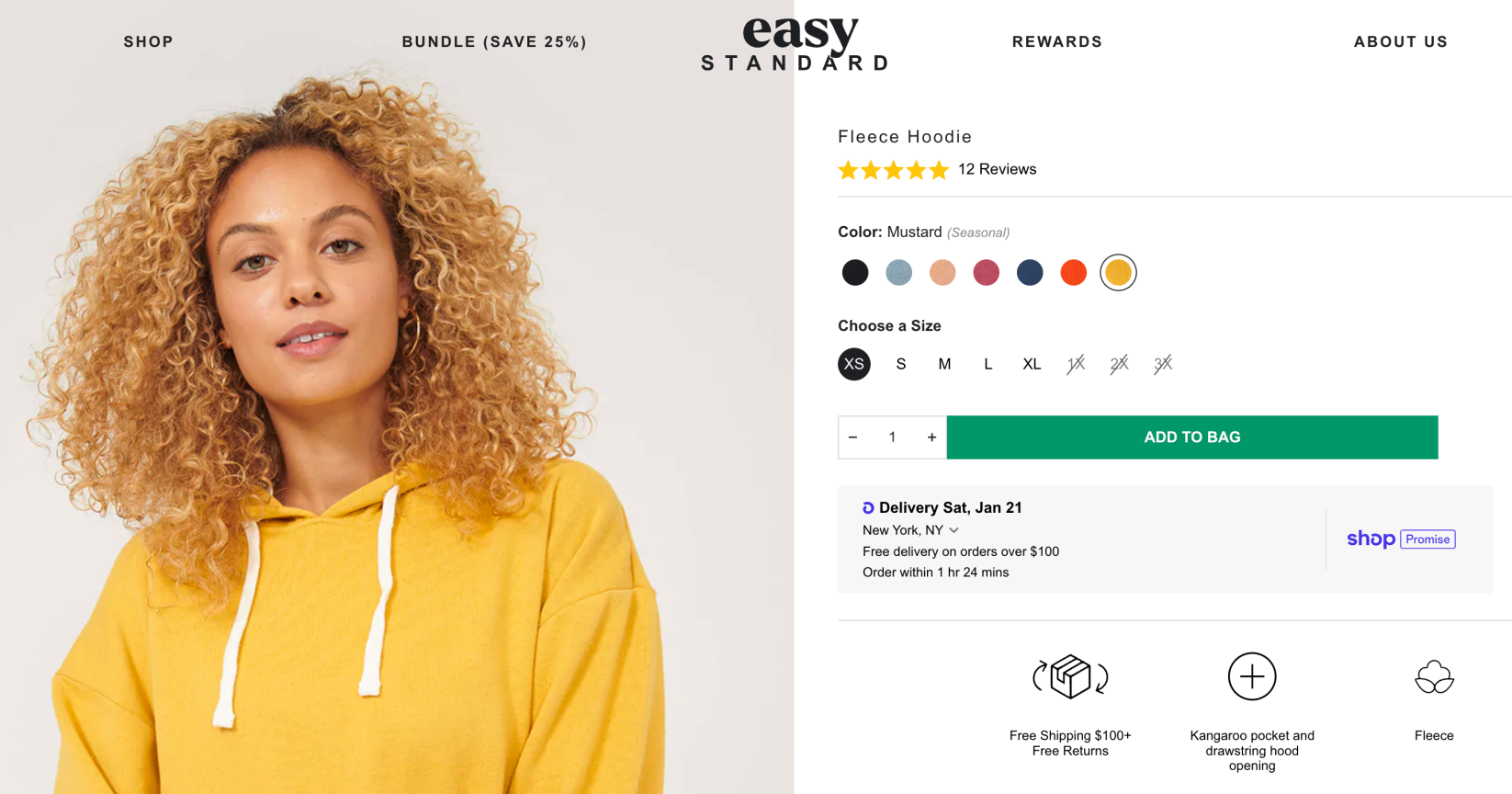
EasyStandard commits to delivery promises with Shop Promise.
EasyStandard also used Shopify Plusto offer a “build a bundle” option to incentivize more shoppers to spend more. These changes saw a 19% relative increase in conversion.
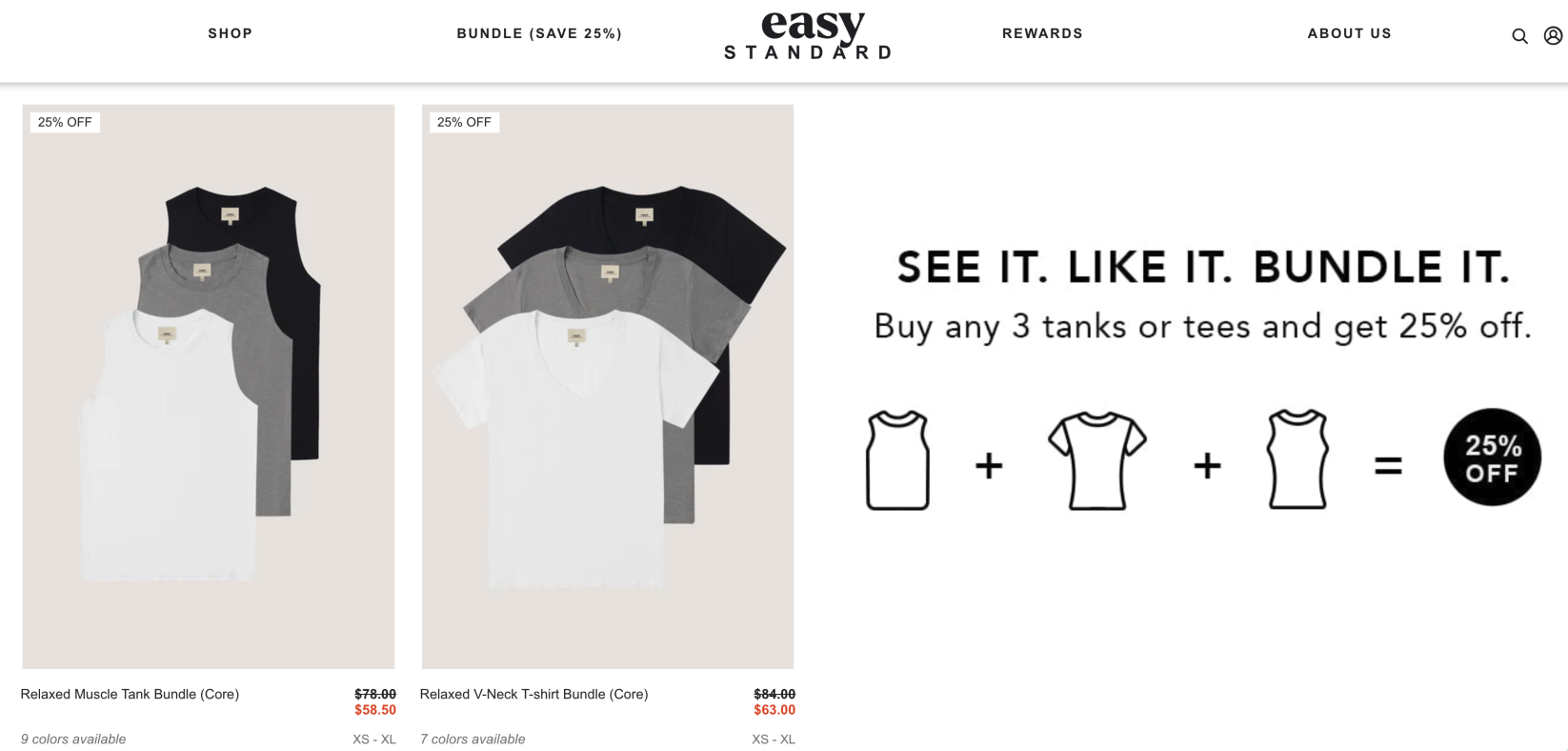
EasyStandard’s build a bundle option.
Enable one-page checkout
Long, complex checkout processes can deterup to 17%of returning visitors from completing their purchase. It’s the equivalent of falling at the final hurdle. You’ve done the hard work of getting a returning visitor back to your site and adding an item to their online cart.
In an interview withModern RetailShopify产品总监,摩尼·法表示: “The look and feel and consistency of the experience for the buyer journey is important. But so too, are the elements that make that checkout unique to the business needs and business processes of that merchant.”
One-page checkout, which simplifies thecheckout experience, prevents your hard work from going to waste. Potential customers see the required information all on one page, like this one-page checkout example fromJones Road Beauty.
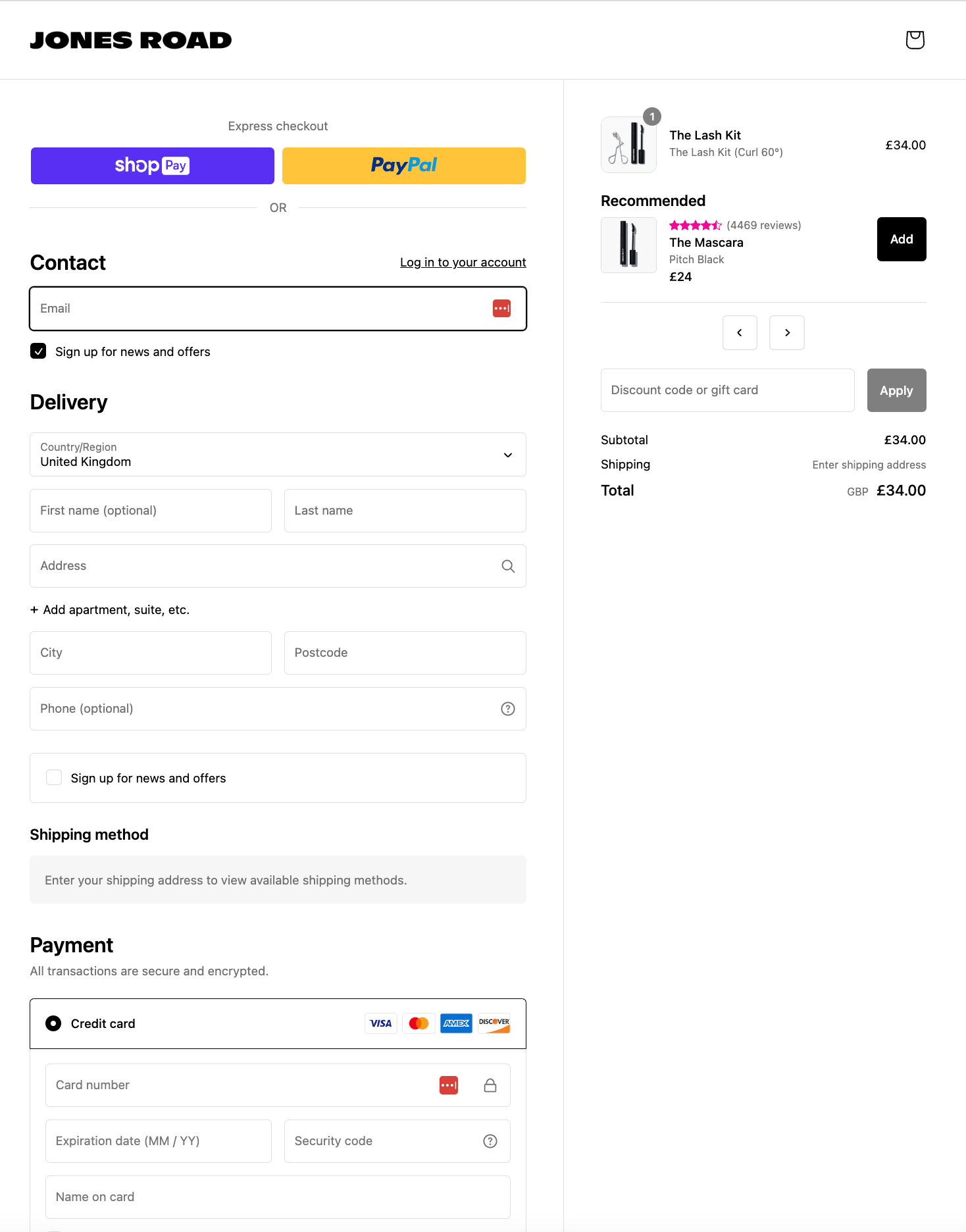
Jones Road Beauty’s Shopify-powered one-page checkout.
Simplify the checkout process even further with one-click checkout. Customers who’ve already purchased using a digital wallet—such asShop Pay, PayPal, or Apple Pay—can use stored payment data to complete their purchase. The quicker a returning visitor can get through the checkout process, the less time they spend pondering their purchase.
The returning visitor: conclusion
Returning visitors are low-hanging fruit in your customer acquisition strategy. They’re already aware of your brand and the products you sell. A sleek retargeting campaign and excellent on-page user experience can turn them into paying customers—regardless of whether it’s their first or 10th purchase.
The key is to personalize marketing campaigns that drive returning visitors back to your ecommerce store. Once they arrive, go all out on building trust and credibility. Whether it’s social proof, engaging product photography, or one-page checkout, re-engaging previous website visitors can easily become your most profitable way of acquiring new customers.
Returning visitors FAQ
What is a returning visitor?
A returning visitor is somebody who has visited your ecommerce website more than once. You can find this metric inside your ecommerce or Google Analytics dashboard.
Why are returning visitors important?
Ecommerce merchants that track returning visitors have the bigger picture on how loyal customers are, and how optimized their websites are for conversions. People who return to an online store multiple times without buying can indicate the site doesn’t instill enough trust for them to convert or the traffic being diverted there isn’t qualified.
What is a new visitor vs. a returning visitor?
A new visitor is somebody who is visiting your website for the first time. A returning visitor, however, has visited previously.
What is the difference between unique visitors and returning visitors?
A unique visitor is a single person that visits your website over a given timeframe. A returning visitor is someone who has already visited before.
Read More
- Supercharge Your Instagram Sales Funnel with Lessons from a Multi-Million Dollar Business
- How to Amass +110k Micro-Influencers on Instagram & Increase Referral Sales 300%
- How to Reduce Fears and Bring Clarity to the Checkout
- How to Create a Brand People Can’t Forget: Purple Mattress on Product, Voice, and Culture
- Supply Chain Optimization: How to Develop a World-Class Logistics Network
- How to Personalize for Unknown Black Friday Cyber Monday Mobile Visitors
- How to Execute an Effective Ad Retargeting Campaign That Works
- Why Leading Indicators in Ecommerce Are the Key to Success & How to Find Them
- Overhauling Your Customer Acquisition Model: How to Spend Your Budget Where It Really Counts
- How to Optimize Your Mobile Checkout Flow
